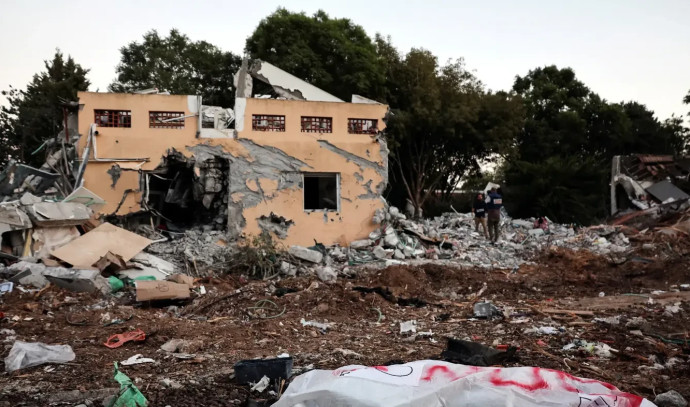Trauma, as defined in professional literature, refers to exposure to a negative and terrifying event that threatens our physical and/or mental well-being.
For those who have experienced them, the horrific attacks carried out by Hamas terrorists have encompassed all aspects of this definition. First of all, they violated the rule of war that innocent civilians, especially children, should not be harmed. Secondly, they were marked by unimaginable cruelty. Lastly, the experience of abandonment and potential betrayal shattered the trust many Israelis had in the security forces that were supposed to protect them. The trauma resulting from these incidents extends beyond individual victims and their families; it affects entire communities and Israeli society as a whole. The events have not only caused physical and emotional harm but have also shattered many people’s faith in humanity and the competency of our armed forces.In response to an external threat, the natural survival instinct is to fight or flee. However, when faced with a traumatic event beyond our control, we often freeze. The energy that should be directed towards actively coping with the situation becomes trapped within our nervous system, often manifesting as physical, emotional, and behavioral symptoms.
How can we recognize the trauma in children and help them?
Dr. Gabriella Kashy Rozenbaum, an educational psychologist and lecturer at Ashkelon Adamic College, offers some insights on how to provide mental first aid to children and adults dealing with trauma.
Recognizing trauma in children can be especially challenging as they may not express their feelings in the same way as adults.
Common symptoms in traumatized children include regression, bed-wetting, anxiety, sleep disturbances, changes in behavior such as anger outbursts, aggression, and withdrawal, academic decline, changes in play patterns, avoidance behaviors, and feelings of guilt or shame. It is important to note that not all children will exhibit all of these symptoms. The focus should be on identifying changes in the child’s behavior and addressing them accordingly.
When providing help to traumatized children, it is crucial to understand their unique perspectives and cognitive abilities.
Children view events as if they are directed at them personally and interpret them in a magical and non-rational manner, intensifying their fears and anxieties. Attempting to rationalize or explain that the events are not directly related to them is futile. Instead, offering solutions to deal with their perceived threats is more effective. Additionally, children have a different perception of time and may not comprehend statements such as “everything will be fine in a few days.” Therefore, it is important to engage with them in a way that encourages them to share their experiences and emotions.
Contrary to the belief that avoiding conversations about the traumatic event will prevent further distress, it is essential to allow trauma victims, both children and adults, to talk about their experiences. Repressing the event can actually intensify the traumatic symptoms. Victims should be encouraged to share the details of what happened in chronological order, as traumatic memories are often fragmented and disorganized. Children should be given the freedom to express themselves through play, drawing, writing, or talking.
It is crucial to create an environment where trauma victims feel safe and supported, emphasizing that they are not alone.
Validating their experiences and emotions is important, and it is advised not to downplay the severity of what they have been through. Comparing their experiences to worse cases is discouraged; instead, empathy and acknowledgment of their feelings should be the focus. For children, praising their acts of heroism in the face of adversity can aid their families in coping with the losses they have suffered.
Establishing a stable routine as quickly as possible is essential for both children and adults in order to restore a sense of security and normalcy.
While this may be challenging in the current circumstances, it is important to make the effort. Additionally, involving trauma victims in helping others, to the extent of their abilities, can be beneficial. Children exposed to trauma should undergo professional evaluation if there are noticeable changes in their behavior. For adults, it is important to note that traumatic symptoms are natural and often subside on their own with initial support. However, if symptoms persist for more than two days, seeking professional intervention is recommended.



